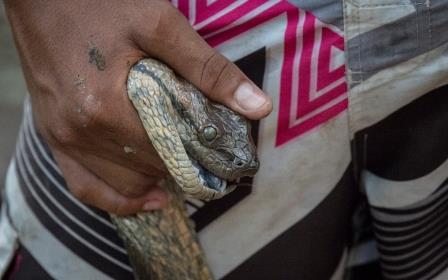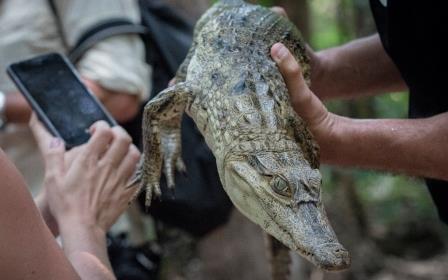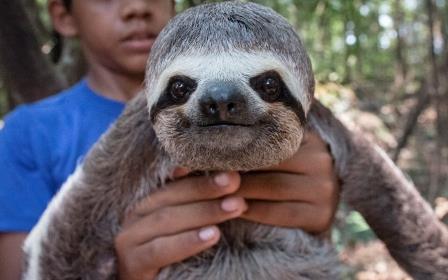News
WILDCRU-WAP collaboration culminates in confiscation of wildlife photo-props in Puerta Alegria, Peru
WildCRU is dedicated to action and impact, our mission statement first formalised in 1986 is to achieve practical solutions to conservation problems through original scientific research. So, when earlier this month we published our new findings in the Journal of Sustainable Tourism, we greatly hoped our work would lead to measurable impact. The paper, (https://www.tandfonline.com/doi/abs/10.1080/09669582.2018.1484752) focused on that element of wildlife tourism, across Latin America, that involving close interactions with free-ranging, non-domesticated, animals outside of formal captive environments. Put bleakly, operators were catching animals from the wild and holding them in captivity for use as photo props in tourist selfies. Quite a few of these animals are of endangered species and so, quite apart from the individual cruelty they may endure, and indeed the seemingly inappropriate idea of a proper relationship with nature that the photo-prop industry promotes, we drew attention to its potential negative impact on species conservation. This work was led by Dr Neil D’Cruze, as part of a productive collaboration with World Animal Protection. Neil, a long-time associate of WildCRU, is also a remarkable photographer, as the images illustrating this news item demonstrate. The wildlife-selfie business is just one aspect of the greenwashing problem in wildlife tourism, a topic on which WildCRU’s papers led by Tom Moorhouse have been at the forefront.
During this collaborative research project our partnership shared some of the early evidence with National Geographic, and our hope for impact was fulfilled when they ran a major story on this aspect of tourism:
One place, Puerta Alegria, was particularly unsettling, because many of the selfie-props appeared to have been sourced illegally from the wild, and then kept under poor conditions. Coinciding with the publication of our paper (https://www.tandfonline.com/doi/abs/10.1080/09669582.2018.1484752) the enforcement authorities have acted there: https://www.nationalgeographic.com/animals/2018/12/22-wild-animals-rescued-from-tourism-trade-on-amazon-river/
Copyright Neil D’Cruze – images taken of an anaconda, caiman and sloth used as photo props at a selfie spot in Brazil.








